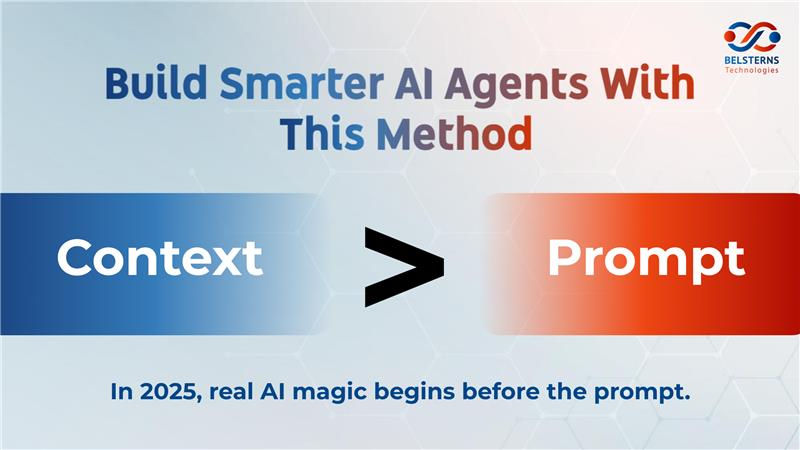Context Engineering is the New Prompt Engineering in 2025
- Philip Moses
- 16 hours ago
- 3 min read
Updated: 14 minutes ago
Meta Description: Explore the differences between context engineering and prompt engineering, and learn how context-rich prompts are shaping the future of AI interactions in 2025.
Welcome to the evolving world of AI interactions! In this blog, we'll explore the shift from prompt engineering to context engineering and how it's revolutionizing the way we communicate with AI. We'll discuss what context engineering is, how it differs from prompt engineering, and why context-rich prompts are essential for building enterprise-grade AI solutions in 2025.

Context Engineering: The New Frontier in AI Communication
As AI language models (LLMs) continue to advance, our expectations for their capabilities have grown exponentially. In 2025, context engineering has emerged as the key to unlocking the full potential of LLMs, enabling them to deliver accurate, reliable, and appropriate outputs for complex tasks.
What is Context Engineering?
Context engineering is the process of structuring and optimizing the entire input provided to an LLM, ensuring it has all the necessary "context" to generate the desired output. This approach goes beyond prompt engineering by considering the entire environment around the LLM, including documents, agents, metadata, and retrieval-augmented generation (RAG).
Context Engineering vs Prompt Engineering
While prompt engineering focuses on crafting well-structured inputs to guide LLM outputs, context engineering takes a more comprehensive approach. It involves setting up the entire environment around the LLM to improve its output accuracy and efficiency, even for complex tasks.
In essence, context engineering can be represented as:
Context Engineering = Prompt Engineering + (Documents/Agents/Metadata/RAG, etc.)
Components of Context Engineering
Context engineering comprises several components that shape the way LLMs process inputs. Some of these components include:
Instruction Prompt: Guiding the model's personality, rules, and behavior.
User Prompt: Addressing immediate tasks or questions.
Conversation History: Maintaining flow and consistency in conversations.
Long-term Memory: Preserving user preferences, conversations, or important facts.
RAG: Retrieving real-time information from documents, APIs, or databases.
Tool Definition: Knowing how and when to execute specific functions.
Output Structure: Responding in required formats, such as JSON or tables.
The Power of Context-Rich Prompts
Modern AI solutions in 2025 rely not only on LLMs but also on AI agents that gather and deliver context to the LLM effectively. Context-rich prompts ensure that LLMs understand the immediate question, broader goal, user preferences, and any external facts needed to produce precise, reliable results.
For example, consider two system prompts provided to an AI fitness coach agent:
Well-Structured Prompt: The agent acts like a professional coach, asking questions one at a time, validating and confirming user inputs, and providing a detailed, safe, and personalized action plan only after collecting all necessary information.
Unstructured Prompt: The agent might provide a generic plan without assessing crucial user information, leading to an unsafe and unsatisfactory user experience.
Writing Better Context-Rich Prompts
To create effective context-rich prompts, focus on these four core skills:
Writing Context: Assist agents in capturing and saving relevant information for later use, similar to taking notes.
Selecting Context: Bring in just the relevant information for the task at hand, ensuring agents remain focused and accurate.
Compressing Context: Reduce information to the smallest size possible while keeping salient details, often by summarizing earlier parts of the conversation.
Isolating Context: Break down information into separate pieces so that agents can better undertake complex tasks without getting overloaded.
Conclusion
In 2025, context engineering has become the cornerstone of AI interactions, enabling LLMs to deliver accurate, reliable, and appropriate outputs for complex tasks. By understanding the differences between context engineering and prompt engineering, and focusing on writing better context-rich prompts, we can unlock the full potential of AI and build enterprise-grade solutions that cater to our evolving expectations.


Comentarios